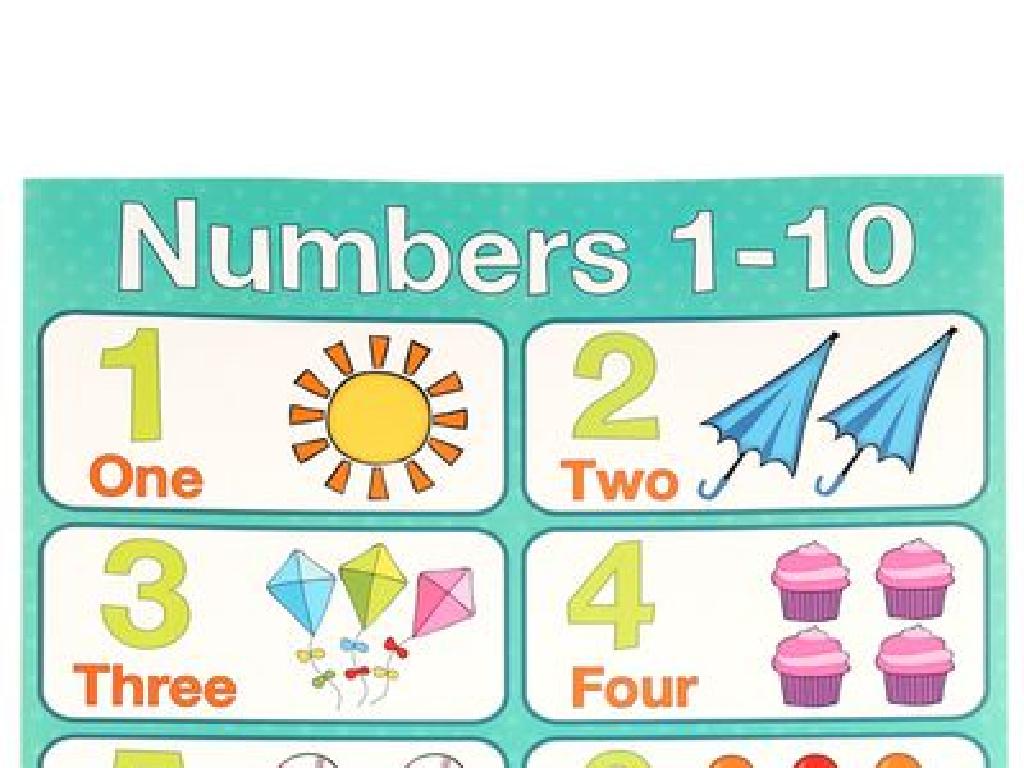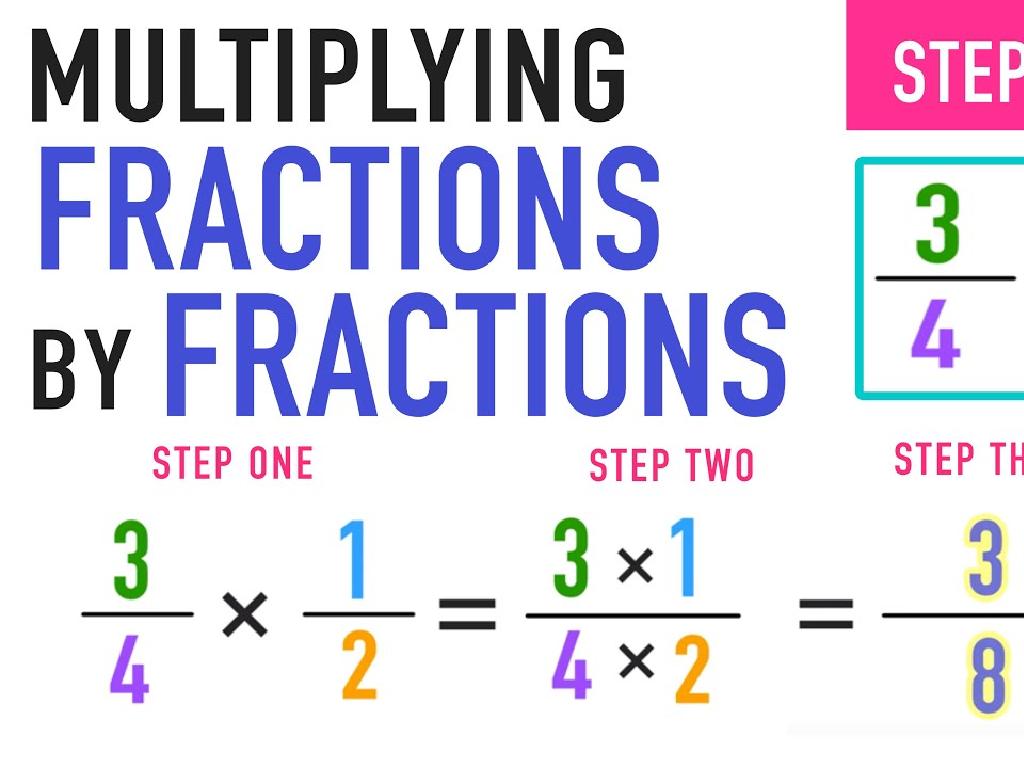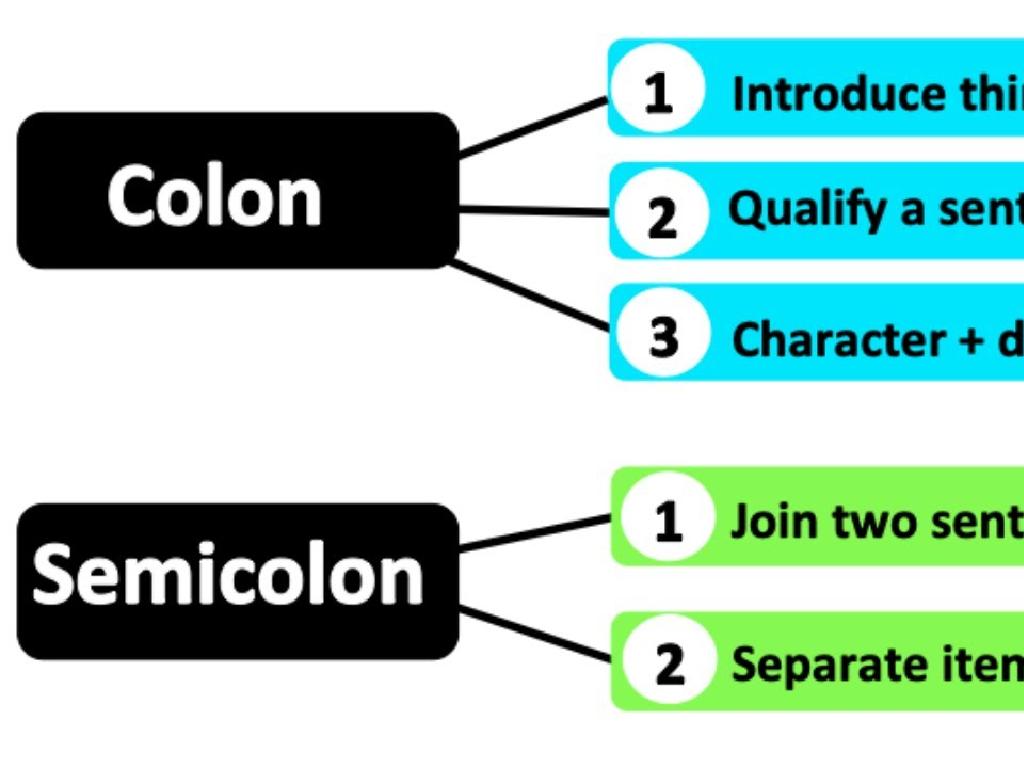Skip-Counting By Tens
Subject: Math
Grade: Second grade
Topic: Skip-Counting And Number Patterns
Summary: This engaging second-grade math presentation teaches skip-counting by tens, helping students quickly count and recognize number patterns up to 100. Through interactive games, number line activities, and everyday examples like counting money or fruits, students discover how skip-counting simplifies math. Hands-on exercises and group challenges make learning fun, build foundational multiplication skills, and reinforce place value understanding-encouraging ongoing practice for math confidence.
Please LOG IN to download the presentation. Access is available to registered users only.
View More Content
Today’s Adventure: Skip-Counting by Tens!
– What is Skip-Counting?
– Jumping ahead in a sequence, missing some numbers
– Counting by tens
– Like hopping: 10, 20, 30, up to 100!
– Why Skip-Counting helps
– It’s a quick way to count things in groups
– Practice makes perfect
|
Introduce skip-counting as a fun and efficient way to count objects faster. Explain that instead of counting each object one by one, we can ‘skip’ to every tenth number. Demonstrate counting by tens using real-life examples, such as groups of ten pencils or ten fingers. Emphasize the usefulness of skip-counting in everyday situations, like tallying scores or counting money. Encourage students to practice by counting various items in tens and to notice patterns that emerge when we skip-count. This will lay the groundwork for multiplication and help with mental math skills.
Hop, Skip, and Jump with Numbers!
– What is Skip-Counting?
– Skipping numbers in a sequence, like jumping over some
– Skip-Counting is number hopping
– Imagine hopping on a number line to count
– Skip-Count by 2s, 5s, 10s
– We can jump in different number sizes
– Practice: Counting by 10s
– Let’s jump by 10s: 10, 20, 30, and so on!
|
This slide introduces the concept of skip-counting to second graders, which is a fundamental skill in understanding number patterns and preparing for multiplication. Explain that skip-counting is like leaping over numbers on a number line, which makes counting faster and more fun. Emphasize that we can skip-count by various increments, but today we’ll focus on tens. Engage the students with a practice activity where they count by tens, reinforcing the pattern and helping them visualize the concept. Encourage them to use their fingers or physical movements to represent each jump of ten to enhance their learning experience.
Counting by Tens
– Counting in tens: 10 to 100
– Let’s count together: 10, 20, 30, … up to 100!
– Pattern observation: last digit zero
– Every number ends with a 0 when we skip-count by tens.
– Practice counting by tens
– We’ll count by tens with fun activities.
– Understand the tens place value
– Recognize the tens place in two-digit numbers.
|
This slide introduces students to the concept of skip-counting by tens, which is a foundational skill in understanding place value and number patterns. Start by counting together from 10 to 100 to help students get familiar with the sequence. Highlight the pattern that the last digit is always zero, which can help them remember the sequence easily. Engage the class with interactive counting activities, such as clapping or jumping at each count to make learning fun. Explain the significance of the tens place in two-digit numbers to provide a deeper understanding of the number system. Encourage students to practice skip-counting by tens using objects like blocks or coins to reinforce the concept.
The Benefits of Skip-Counting by Tens
– Count faster with skip-counting
– Use it for telling time
– Like when we say it’s 30 minutes past
– Apply it to count money
– Instead of counting each penny, count by tens
– Makes math easier and fun
|
Skip-counting by tens is a fundamental skill that helps students increase their counting efficiency, which is especially useful in everyday situations like telling time and handling money. For example, when telling time, we often say ’30 minutes past’ instead of counting each minute. Similarly, with money, we can count dimes quickly by tens rather than counting each penny individually. This concept also lays the groundwork for understanding place value and arithmetic operations. During the presentation, engage students with examples and encourage them to practice by counting various items by tens to reinforce the concept.
Skip-Counting by Tens with Fruits
– Counting fruits in groups of ten
– Imagine 10 apples, then 10 more, and so on
– Groups make counting easier
– Instead of counting each fruit, we count by tens
– Example with apples, oranges, bananas
– 10 apples, 20 oranges, 30 bananas shows patterns
– Practice with different fruit sets
|
This slide introduces students to the concept of skip-counting by tens using familiar items like fruits. By visualizing groups of ten apples, oranges, and bananas, students can grasp how skip-counting simplifies the process of counting large quantities. Emphasize that each group of ten represents a ‘bundle’ that can be counted as one unit, making it quicker and easier to reach higher numbers. Encourage students to practice with different sets of fruits or other objects they like, reinforcing the concept through repetition and variation. The goal is for students to recognize patterns in numbers and gain confidence in counting by tens.
Let’s Practice Together: Counting by Tens!
– Fill in missing numbers on a number line
– Use the number line to find the sequence
– Discover the number after 40 by tens
– If we add 10 to 40, what number do we get?
– Understand the pattern of tens
– Each number increases by 10: 10, 20, 30, 40, ?
– Practice skip-counting with classmates
– Share your answers and learn together
|
This slide is an interactive class activity designed to help students practice and reinforce their understanding of skip-counting by tens. Start by explaining how to use a number line as a visual aid for counting. Then, guide the students to identify the pattern of adding 10 to each previous number. Ask them to fill in the blanks on a number line you’ve prepared, and specifically focus on what number comes after 40 when counting by tens. Encourage students to work together and discuss their findings. This collaborative approach not only solidifies their grasp of skip-counting but also fosters a supportive learning environment.
Skip-Counting Game: Jumping by Tens!
– Let’s play a skip-counting game
– Jump to the next ten on your turn
– If you’re on 10, where do you jump next?
– Practice counting by tens aloud
– Start at 10, then 20, 30, 40, and so on
– Have fun while learning to count!
|
This interactive game is designed to help second graders practice skip-counting by tens in a fun and physical way. Set up a number line on the floor with multiples of ten. Students take turns jumping from one multiple to the next, saying the numbers out loud as they go. This reinforces their understanding of number patterns and helps them visualize the concept of skip-counting. For the activity, consider variations like skip-counting backward, starting from different numbers, or using a dice to determine the number of jumps. Ensure safety during the activity and encourage all students to participate.
Class Activity: Number Line Hopscotch
– Create a number line hopscotch
– Hop and count by tens together
– Start at 0, hop to 10, 20, 30, and so on
– Challenge: Reach 100 by skip-counting
– Can you jump from 0 to 100 in tens?
– Take turns and help each other
– Encourage classmates during their turn
|
This interactive activity is designed to help students understand the concept of skip-counting by tens in a fun and physical way. By creating a number line hopscotch on the floor, students will be able to visualize the number sequence and reinforce their counting skills through movement. As they take turns hopping along the number line, they will practice counting aloud by tens, which aids in memorization and number pattern recognition. The goal of reaching 100 by skip-counting adds a challenge and a sense of achievement. Encourage students to support and cheer for their peers. For the teacher: Prepare the hopscotch in advance, ensure safety during the activity, and consider having multiple hopscotch setups if the class size is large to keep the activity flowing smoothly.
Celebrating Skip-Counting by Tens!
– Congratulations on mastering skip-counting by tens!
– Counting by tens speeds up counting
– Instead of counting 1 by 1, jumping by tens is like fast-forwarding.
– Practice skip-counting with loved ones
– Try counting objects in groups of ten with family or friends for fun.
– Keep practicing to get even better!
– The more you practice, the quicker you’ll become at counting!
|
This slide is a congratulatory closing that reinforces the students’ achievement in learning to skip-count by tens. It emphasizes the practicality and efficiency of this method in everyday counting tasks. Encourage students to continue practicing at home, turning it into a fun activity with family and friends. This will help solidify their understanding and speed in counting by tens. Remind them that practice is key to becoming proficient in this skill and that they should feel proud of their progress.





